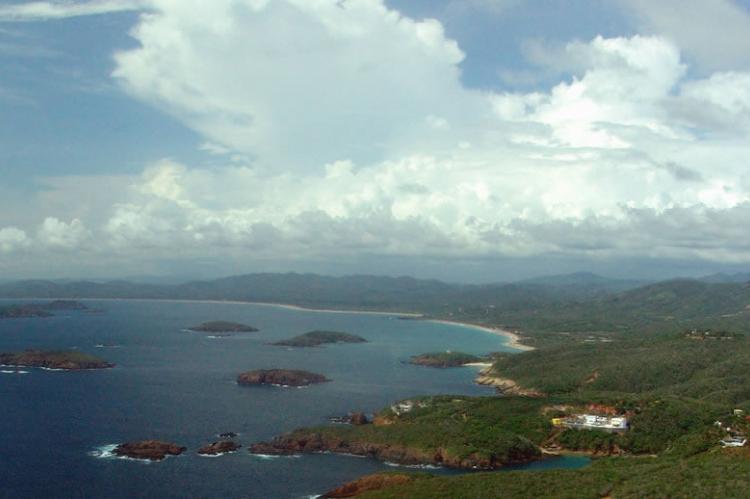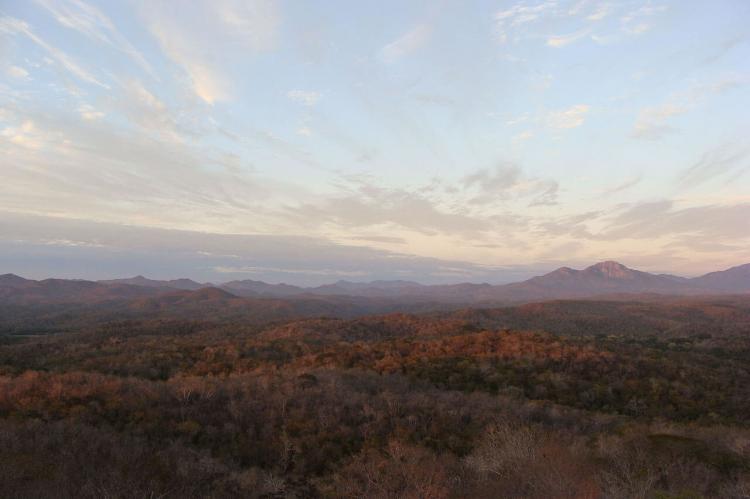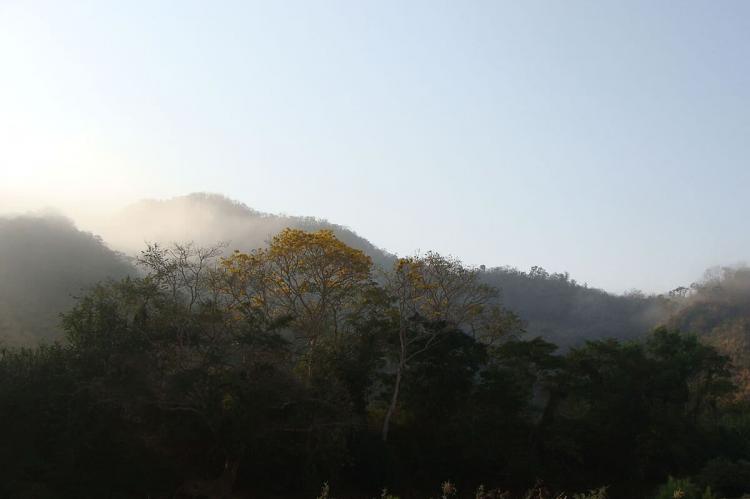Preserving Mexico's Tropical Dry Forests: The Chamela-Cuixmala Biosphere Reserve
The Chamela-Cuixmala Biosphere Reserve, stretching along the Pacific coast in Jalisco, Mexico, protects one of the most biologically diverse landscapes in the Americas. It is renowned for preserving dry and deciduous tropical forests, some of the most endangered and ecologically important ecosystems.
Chamela-Cuixmala Biosphere Reserve: A Bastion of Biodiversity on Mexico's Pacific Coast
The Chamela-Cuixmala Biosphere Reserve is a rich mosaic of ecosystems located in the state of Jalisco, Mexico. Stretching along the Pacific coast, this reserve protects one of the most biologically diverse landscapes in the Americas. The reserve is named after the town of Chamela, an important historical port, and the Cuixmala River, which serves as a natural boundary. The Chamela-Cuixmala Biosphere Reserve is renowned for preserving dry and deciduous tropical forests, some of the world's most endangered and ecologically important ecosystems. The area's strategic location and ecological significance make it a critical site for conservation efforts, research, and sustainable development.
Geographical and Ecological Overview
The Chamela-Cuixmala Biosphere Reserve is situated about 170 km (105 mi) from Puerto Vallarta, Jalisco, and approximately 100 km (62 mi) from Manzanillo, Colima. It occupies a coastal plain within the Sierra Madre del Sur's sub-provinces, featuring a predominantly mountainous terrain interspersed with grasslands and floodplains. The region's diverse topography includes hills, river valleys, and coastal plains, creating a wide range of habitats that support a variety of plant and animal life.
The reserve encompasses approximately 13,142 hectares (32,479 acres) and is characterized by several distinct ecosystems, including tropical deciduous forests, sub-deciduous forests, wetlands, coastal and marine ecosystems, and islands. Tropical deciduous forests dominate the landscape, particularly adapted to the area's marked dry and rainy seasons. These forests lose their leaves during the dry season to conserve water, creating a striking visual contrast between the dry and rainy months. Wetlands are found along the floodplains of the rivers and streams, providing critical habitats for aquatic species and serving as breeding grounds for birds and other wildlife.
The Chamela-Cuixmala Biosphere Reserve plays a vital role in the conservation of tropical dry forests, which are among the most threatened ecosystems globally due to deforestation, agriculture, and urban development. The reserve's ecosystems are important for biodiversity and provide essential ecosystem services such as water regulation, soil conservation, and carbon sequestration.
Flora and Fauna: Rich Biodiversity and Endemism
The Chamela-Cuixmala Biosphere Reserve is home to a wide range of plant and animal species, many of which are endemic to the region. The flora includes various species of trees, shrubs, and grasses adapted to the tropical dry forest environment. Notable tree species include the papelillo (Bursera simaruba), copal (Bursera spp.), and palo mulato (Bursera graveolens), known for their peeling bark and medicinal properties. The diversity of plant life provides food and shelter for the reserve's abundant wildlife.
The fauna of the Chamela-Cuixmala Biosphere Reserve is equally diverse, featuring numerous mammals, reptiles, birds, and amphibians. The reserve is a haven for large predators such as the jaguar (Panthera onca), puma (Puma concolor), ocelot (Leopardus pardalis), and jaguarundi (Herpailurus yagouaroundi), which rely on the extensive forest cover for hunting and habitat. Other notable mammals include the coyote (Canis latrans), coati (Nasua narica), white-tailed deer (Odocoileus virginianus), and peccary (Pecari tajacu).
Reptiles such as the American crocodile (Crocodylus acutus), geckos, boas, and vipers are common in the reserve's wetland areas and forests. Amphibians, including toads and frogs, are abundant, particularly during the rainy season when temporary pools and streams provide ideal breeding sites.
The Chamela-Cuixmala Biosphere Reserve is also a critical habitat for avian species, hosting a variety of resident and migratory birds. Endemic birds such as the military macaw (Ara militaris), crested guan (Penelope purpurascens), and black-throated magpie-jay (Calocitta colliei) can be found in the forests. During winter, the reserve's location along the Pacific Flyway makes it an important stopover for neotropical migratory birds, including hawks, kites, storks, and vultures.
Marine life in the reserve's coastal areas is also rich, with species such as sea turtles, which nest on the beaches, and numerous fish and invertebrates that thrive in the estuaries and coastal waters.
Climate: Seasonality and Environmental Conditions
The Chamela-Cuixmala Biosphere Reserve experiences a tropical climate characterized by distinct wet and dry seasons. The rainy season typically lasts from July to October, bringing heavy rains that replenish water sources and promote lush vegetation growth. In contrast, from November to June, the dry season is marked by reduced rainfall and higher temperatures, leading to leaf shedding in deciduous forests as plants conserve water.
The reserve's average annual temperature is around 25°C (77°F), with the coldest month averaging above 18°C (64°F). Annual precipitation is approximately 762 mm (30 in), most of which falls during the rainy season. This climate creates ideal conditions for the diverse ecosystems found within the reserve, from dense forests to open grasslands and wetlands.
Socio-Economic Aspects and Human Interaction
Human presence within the core areas of the Chamela-Cuixmala Biosphere Reserve is minimal, limited mainly to researchers and conservationists working at the biological station established by the National Autonomous University of Mexico in 1971. This research station plays a critical role in studying and preserving the reserve's ecosystems, providing valuable data on biodiversity, ecological processes, and the impacts of human activities.
The nearest rural communities to the reserve, such as Pérula, San Mateo, Francisco Villa, and Emiliano Zapata, have populations ranging from 300 to 1,500 people. These communities are involved in agriculture, livestock raising, and tourism, which are the main economic activities in the region. The transition zone of the reserve, which allows for sustainable human use, is home to approximately 5,800 people who rely on natural resources for their livelihoods.
Tourism, particularly ecotourism, is an important economic driver for the region. The reserve's natural beauty, biodiversity, and cultural heritage attract visitors interested in wildlife observation, hiking, and experiencing the unique landscapes of Mexico's Pacific coast. Promoting sustainable tourism practices aims to benefit local communities economically while minimizing environmental impacts.
Conservation Challenges and Initiatives
The Chamela-Cuixmala Biosphere Reserve faces several conservation challenges, including deforestation, habitat fragmentation, agricultural expansion and urban development pressures. Illegal logging, hunting, and the introduction of invasive species pose additional threats to the reserve's biodiversity. Climate change, with its potential impacts on temperature and precipitation patterns, also presents a long-term challenge for the conservation of the region's ecosystems.
Conservation initiatives in the Chamela-Cuixmala Biosphere Reserve focus on habitat protection, ecological restoration, and community engagement. The reserve's management plan emphasizes the importance of preserving the integrity of its ecosystems, promoting sustainable land-use practices, and enhancing the capacity of local communities to participate in conservation efforts. Environmental education programs play a vital role in raising awareness about the importance of biodiversity and the need for sustainable resource management.
Conclusion
The Chamela-Cuixmala Biosphere Reserve is a vital sanctuary for biodiversity and a living laboratory for ecological research and conservation in Mexico. Its diverse ecosystems, ranging from tropical dry forests to wetlands and coastal areas, provide habitat for a wide range of plant and animal species, many of which are endemic or threatened. By balancing conservation with sustainable development and engaging local communities in preservation efforts, the Chamela-Cuixmala Biosphere Reserve serves as a model for protecting Mexico's Pacific coast's natural and cultural heritage of Mexico's Pacific coast.


